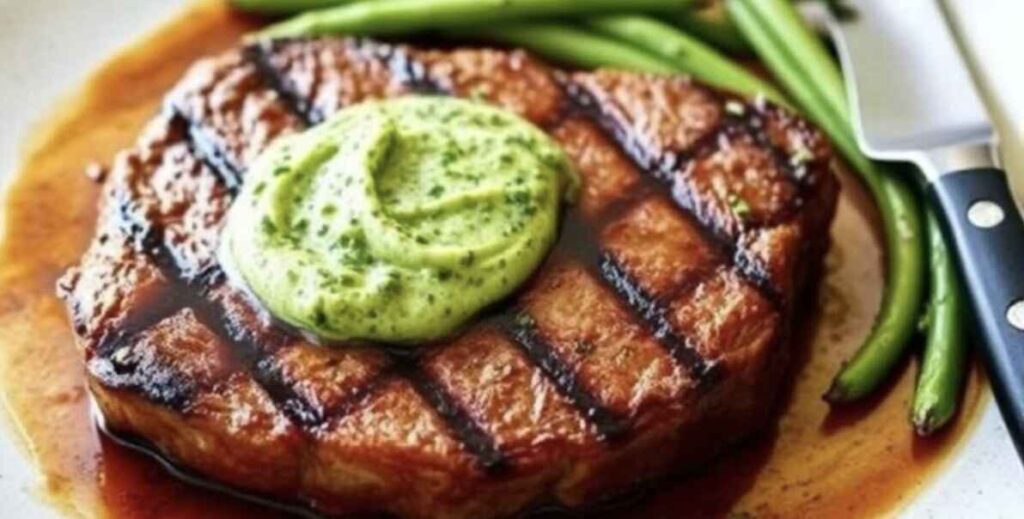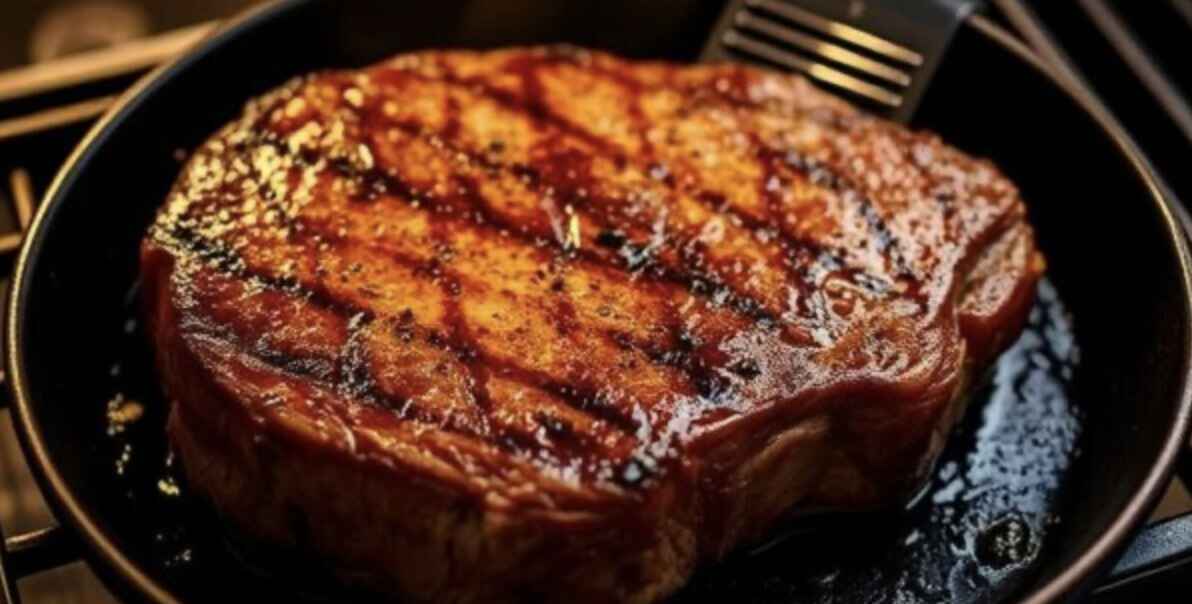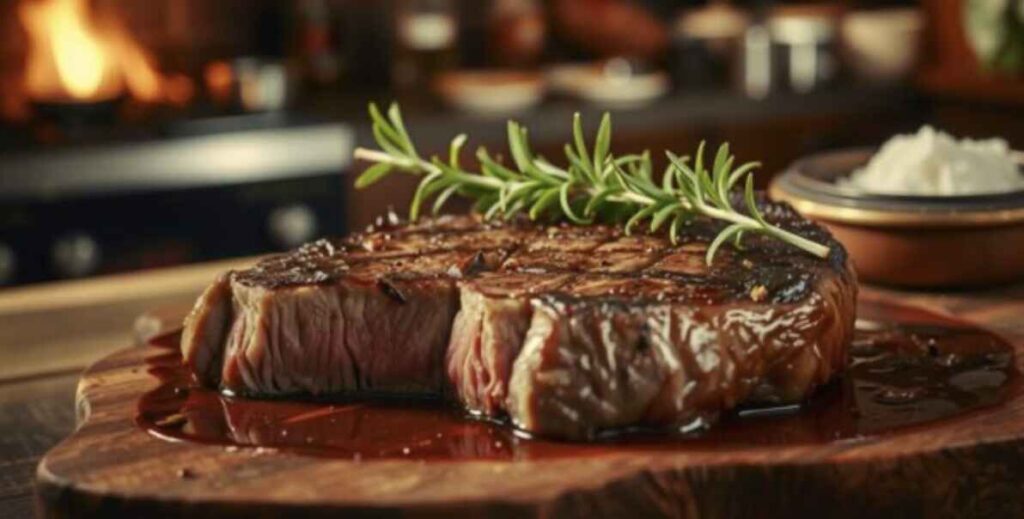Porterhouse steaks are often referred to as the “king of cuts,” and for good reason. This premium steak is a showstopper in the world of grilling and fine dining. With its impressive size, dual textures, and rich flavor, the porterhouse is a favorite among steak lovers. In this comprehensive guide, we’ll delve into everything you need to know about porterhouse steaks—from their history and anatomy to tips for buying, cooking, and serving this culinary masterpiece.
Table of contents
What is a Porterhouse Steak?
A porterhouse steak is a substantial cut of beef that features two distinct sections: the tenderloin and the strip steak. These sections are separated by a T-shaped bone, which adds to the steak’s visual appeal and contributes to its robust flavor when cooked. The tenderloin portion is buttery and soft, while the strip steak offers a firmer, beefier texture, making the porterhouse a perfect choice for those who want the best of both worlds.
According to USDA guidelines, a porterhouse must have a tenderloin section at least 1.25 inches wide at its narrowest point, making it larger and more luxurious than a T-bone steak. This distinction is essential for understanding why porterhouse steaks are often seen as the epitome of indulgence.
The History of Porterhouse Steaks
The origin of the porterhouse steak is steeped in culinary lore. The name “porterhouse” is said to have come from 19th-century establishments known as porterhouses, where travelers could enjoy a hearty steak paired with a glass of porter beer. While the exact origin is debated, one thing is certain: porterhouse steaks have been a symbol of decadence and quality for centuries.
Some food historians trace the cut’s popularity back to the early days of American steakhouses, where the porterhouse became a favorite due to its generous portions and unparalleled flavor. It has remained a staple on steakhouse menus worldwide, symbolizing luxury and satisfaction.
Anatomy of the Porterhouse Steak

Understanding the anatomy of a porterhouse steak is key to appreciating its unique qualities. This cut is derived from the rear portion of the short loin, which gives it its signature combination of two prized cuts:
- The Tenderloin: This is the most tender part of the steak, often referred to as filet mignon when served on its own. Its velvety texture and mild flavor make it a coveted portion.
- The Strip Steak: Also known as the New York strip, this section is firmer and has a more pronounced beefy flavor. It provides a satisfying chew that contrasts beautifully with the tenderloin.
Together, these two cuts create a steak that offers a variety of textures and flavors, making it a favorite among steak connoisseurs.
Choosing the Perfect Porterhouse Steak
When shopping for porterhouse steaks, quality matters. Here are some tips to help you select the perfect cut:
- Marbling: Look for steaks with ample marbling—the streaks of fat within the muscle. Marbling enhances flavor and ensures the steak remains juicy during cooking.
- Thickness: A good porterhouse should be at least 1.5 inches thick. Thicker steaks are easier to cook evenly and retain their juiciness.
- Color: Choose steaks with a bright, cherry-red color. This indicates freshness and quality.
- Source: Opt for USDA Prime or Choice grade beef for the best flavor and tenderness. Consider sourcing from local butchers or reputable meat purveyors for top-notch quality.
Cooking Porterhouse Steaks: Methods and Tips
Cooking a porterhouse steak to perfection requires attention to detail, but the results are well worth the effort. Here are some popular methods and tips to achieve steakhouse-quality results at home:
1. Grilling
Grilling is one of the most popular ways to cook a porterhouse steak. The open flame imparts a smoky flavor that complements the beef’s natural richness.
- Preparation: Season the steak generously with kosher salt and freshly ground black pepper. Let it rest at room temperature for 30 minutes before cooking.
- Cooking: Place the steak on a preheated grill over high heat. Sear each side for 3-4 minutes, then move it to indirect heat to finish cooking. Use a meat thermometer to check for doneness (130°F for medium-rare).
- Resting: Let the steak rest for 5-10 minutes before slicing to allow the juices to redistribute.
2. Pan-Seared and Oven-Finished

For those without access to a grill, a cast-iron skillet and oven combination is an excellent alternative.
- Preparation: Heat a cast-iron skillet over high heat and add a tablespoon of oil. Season the steak as described above.
- Cooking: Sear the steak for 2-3 minutes per side until a crust forms. Transfer the skillet to a preheated 400°F oven to finish cooking.
- Resting: Allow the steak to rest for 5-10 minutes before serving.
3. Reverse Searing
Reverse searing is a method that involves slow-cooking the steak first and then finishing it with a high-heat sear.
- Preparation: Preheat the oven to 275°F. Season the steak and place it on a wire rack over a baking sheet.
- Cooking: Cook the steak in the oven until it reaches an internal temperature of 120°F. Sear it in a hot skillet or on the grill for 1-2 minutes per side.
- Resting: As always, let the steak rest before serving.
Pairing Porterhouse Steaks with Sides and Sauces
A porterhouse steak deserves equally impressive accompaniments. Here are some classic pairings to elevate your dining experience:
- Classic Sides:
- Garlic mashed potatoes
- Grilled asparagus
- Creamed spinach
- Roasted Brussels sprouts
- Sauces:
- Béarnaise sauce
- Red wine reduction
- Chimichurri
- Blue cheese butter
- Beverage Pairings:
- Prominent red wines, including Cabernet Sauvignon and Malbec, are characterized by their bold flavors.
- Craft beers with a malty backbone
- A classic Old Fashioned cocktail
Porterhouse Steak Doneness Guide
Cooking a porterhouse to the desired level of doneness is crucial. Here’s a quick guide to internal temperatures:
- Rare: 120-125°F (Cool red center)
- Medium-Rare: 130-135°F (Warm red center)
- Medium: 140-145°F (Warm pink center)
- Medium-Well: 150-155°F (Slightly pink center)
- Well-Done: 160°F+ (No pink center)
Using a reliable meat thermometer is the best way to achieve consistent results.
Why Porterhouse Steaks Are Worth the Splurge
Porterhouse steaks are undeniably more expensive than other cuts, but their quality and versatility justify the price. Each steak can easily serve two people, making it a great choice for sharing. Its combination of tenderloin and strip steak ensures a luxurious dining experience that’s hard to match.
Storing and Reheating Porterhouse Steaks
To enjoy leftovers without sacrificing quality, proper storage and reheating are essential:
- Storage: Wrap the steak tightly in plastic wrap or aluminum foil and refrigerate for up to 3 days.
- Reheating: Use a low oven (250°F) to warm the steak gently. Finish with a quick sear in a hot skillet to restore the crust.
Fun Facts About Porterhouse Steaks
- The porterhouse is often featured in eating challenges due to its large size.
- It’s a popular choice for celebratory meals and special occasions.
- The T-shaped bone in the porterhouse can be repurposed for making beef stock after the steak is consumed.
What is a Porterhouse Steak?
A porterhouse steak is a substantial cut of beef that features two distinct sections: the tenderloin and the strip steak. These sections are separated by a T-shaped bone, which adds to the steak’s visual appeal and contributes to its robust flavor when cooked. The tenderloin portion is buttery and soft, while the strip steak offers a firmer, beefier texture, making the porterhouse a perfect choice for those who want the best of both worlds.
According to USDA guidelines, a porterhouse must have a tenderloin section at least 1.25 inches wide at its narrowest point, making it larger and more luxurious than a T-bone steak. This distinction is essential for understanding why porterhouse steaks are often seen as the epitome of indulgence.
The Most Popular Recipe:
Grilled Porterhouse Steak with Herb Butter

This classic recipe highlights the natural flavor of the porterhouse steak, enhanced by a simple herb butter that melts into the steak, creating a rich and delicious finishing touch.
Ingredients:
- 1 (1.5–2-inch thick) porterhouse steak (about 2 pounds)
- 2 tablespoons olive oil
- 2 teaspoons kosher salt
- 1 teaspoon freshly ground black pepper
- 2 tablespoons unsalted butter, softened
- 1 teaspoon garlic, minced
- 1 tablespoon fresh parsley, chopped
- 1 teaspoon fresh thyme leaves
- 1 teaspoon lemon zest
Directions:
- Prepare the Herb Butter: In a small bowl, mix the softened butter, garlic, parsley, thyme, and lemon zest. Scoop the mixture onto a piece of plastic wrap and shape it into a small log. Wrap tightly and refrigerate until firm.
- Prepare the Steak: Remove the steak from the refrigerator and allow it to sit at room temperature for approximately 30 minutes. Use paper towels to pat it dry.
- Season the Steak: Rub the steak with olive oil and season generously with kosher salt and freshly ground black pepper on both sides.
- Preheat the Grill: Heat your grill to high, ensuring the grates are clean and well-oiled.
- Sear the Steak: Place the steak directly over the hottest part of the grill and sear for 3-4 minutes per side, creating a beautiful crust.
- Finish Cooking: Move the steak to indirect heat and cook until the internal temperature reaches 130°F for medium-rare (or your preferred doneness). Use a meat thermometer to ensure accuracy.
- Allow the steak to rest: Take the steak off the grill and permit it to rest for a duration of 5 to 10 minutes.
- Add Herb Butter: Just before serving, slice a piece of the chilled herb butter and place it on top of the steak. The butter will melt over the steak, enhancing its flavor.
Serving Suggestions:
- To achieve optimal tenderness, it is advisable to cut the steak across the grain.
- Serve with classic sides such as garlic mashed potatoes, roasted vegetables, or a fresh garden salad.
Prep Time: 15 minutes | Cooking Time: 20 minutes | Total Time: 35 minutes
Kcal: 720 per serving | Servings: 2–3 servings
Conclusion: Embrace the King of Cuts
The porterhouse steak is more than just a meal; it’s an experience. Whether you’re grilling for a summer barbecue, preparing a romantic dinner, or hosting a steak night with friends, the porterhouse delivers unparalleled flavor and presentation. “This guide equips you to select, cook, and enjoy this regal cut to its fullest potential.
Take the time to master the art of cooking porterhouse steaks, and you’ll discover why it’s truly the king of cuts.

